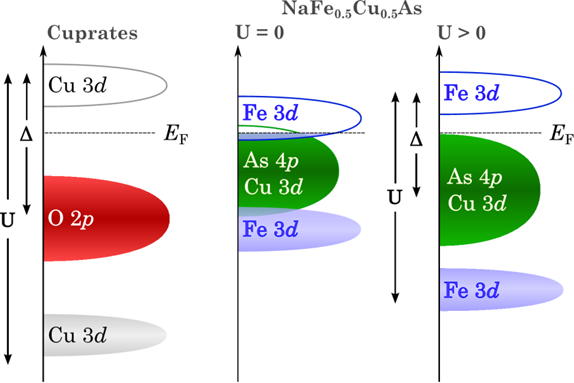Novel insulating phase in iron-pnictide materials
In the studies of iron-pnictides, a key question is whether their bad-metal state from which the superconductivity emerges lies in close proximity with a magnetically ordered insulating phase. Recently it was found that at low temperatures, the heavily Cu-doped NaFe1-xCuxAs (x > 0.3) iron-pnictide is an insulator with long-range antiferromagnetic order, similar to the parent compound of cuprates but distinct from all other iron-pnictides. Using angle-resolved photoemission spectroscopy, we determined the momentum-resolved electronic structure of NaFe1-xCuxAs (x = 0.44) and identified that its ground state is a narrow-gap insulator. Combining the experimental results with density functional theory (DFT) and DFT+U calculations, our analysis reveals that the on-site Coulombic (Hubbard) and Hund’s coupling energies play crucial roles in formation of the band gap about the chemical potential. We propose that at finite temperatures charge carriers are thermally excited from the Cu-As-like valence band into the conduction band, which is of Fe 3d-like character. With increasing temperature, the number of electrons in the conduction band becomes larger and the hopping energy between Fe sites increases, and finally the long-range antiferromagnetic order is destroyed at T > TN. Our study provides a basis for investigating the evolution of the electronic structure of a Mott insulator transforming into a bad metallic phase, and eventually forming a superconducting state in iron-pnictides.
